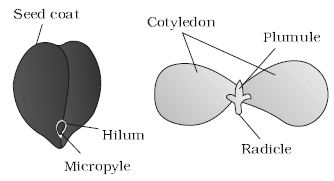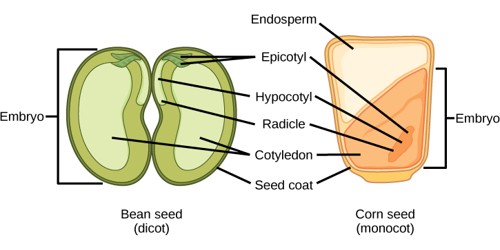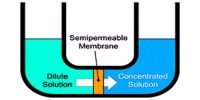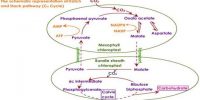The outermost covering of a seed is the seed coat or Dicotyledonous Seed. They are also known as dicots. The seed coat has two layers, the outer testa, and the inner tegmen. The hilum is a scar on the seed coat through which the developing seeds were attached to the fruit. The hilum is a small pore called the micropyle. The whole content is enclosed within a protective cover called the seed coat. Within the seed coat is the embryo, consisting of an embryonal axis and two cotyledons. The cotyledons are often fleshy and full of reserve food materials. At the two ends of the embryonal axis are present the radicle and the plumule (Figure). There are around 200,000 species of dicotyledons discovered to date.

In some seeds such as castor, the endosperm formed as a result of double fertilization. It is a food storing tissue. In plants such as bean, gram, and pea, the endosperm is not present in mature seeds and such seeds are called non-endosperms. Peas, almonds, and cashews are examples of dicotyledons or dicot seeds. Some Other dicot seeds examples include apples, plums, and peaches.
Structure of a Dicotyledonous Seed –
- The seed coat is made up of an outer layer called testa and an inner layer called tegmen. This is the outermost covering of a seed. Moreover, the seed is attached to the fruit through a structure called hilum. The seed coat has two layers, the outer testa, and the inner tegmen.
- The hilum is a scar on the seed coat through which the developing seed was attached to the fruit.
- The micropyle is a small pore present above the hilum.
- The embryo consists of an embryonal axis and two cotyledons.
- Cotyledons are often fleshy and full of reserve food materials.
- Radicle and plumule are present at the two ends of the embryonal axis.















